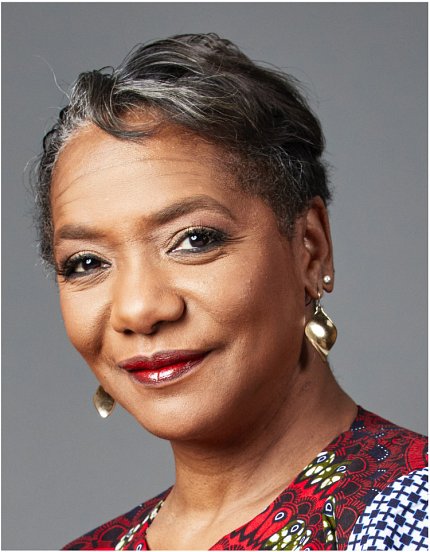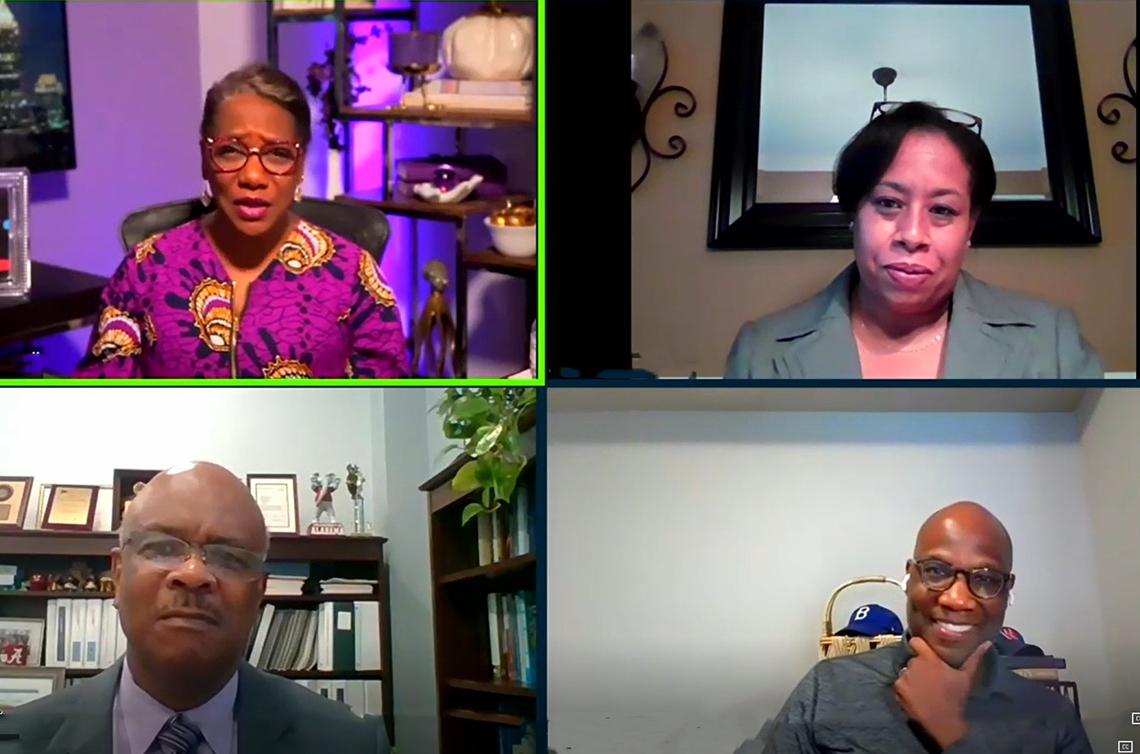We Need to Talk
Stovall Discusses How to Have a Meaningful Difference Dialogue

Talking about race can be difficult, even uncomfortable. Now, though, the country is at a turning point. Conversations about how to cultivate inclusion are emerging, or need to emerge, in organizations and across society. At a recent DDM seminar, Janet Stovall offered tips on how to dive in, open-minded and empathetically, to make real progress.
“Difference dialogue is difficult because it’s disruptive,” said Stovall, senior client strategist at the NeuroLeadership Institute. “But it’s absolutely doable and now, more than ever, it’s desperately needed.”
A major hurdle though is finding a way to talk about difference despite difference, she said, because people are coming to the table from different directions and perspectives. Stovall used the opportunity of talking with an NIH audience to highlight how these disparities permeate health care.
“Color is a huge problem in medical research,” she said. Clinical trials still lack diversity, which is partly due to limited access, low awareness or distrust based on past injustices. But candid conversation, she said, might expose truths about the alleged hesitancy of underrepresented groups to participate.
People of color, in fact, want to participate in studies, said Stovall, and research shows no real difference across races in their willingness to participate.
“Because we aren’t having honest difference dialogue,” she said, “we’re making incorrect assumptions.”
Meanwhile, caring for an increasingly diverse patient population requires meaningful dialogue about the lack of diversity in the medical field, a conversation that should start, she said, with the disproportionately low number of people of color entering medical school.

“Without difference in the profession,” asks Stovall, “can the profession best deliver differentiated care and best engage with increasingly different populations?”
Despite good intentions, perceptions and decisions sometimes are propelled by unconscious bias formed over a lifetime of many different exposures from upbringing, experience, education and geography to politics, religion and the media.
“We operate on a continuum between brain-based biological bias and social-taught bigotry,” said Stovall. “The bridge between is paved with truth-twisted traditions.”
Difference dialogue can help mitigate what can’t be eradicated, by starting with a common language, she said. But too often, common terms about race are misconstrued.
Diversity and inclusion, for example, are not interchangeable. Diversity is something you have, while inclusion is something you do, explained Stovall. Inclusive organizations leverage diversity to address real issues, she said. “Diversity requires intention to stop; inclusion demands intention to start.”
Another confused pair is equality and equity, both of which state the right to the same opportunities. Equality assumes proportionality. Equity, however, assumes disproportionality—not everyone starts from the same place and some people need additional support.
Inequity can be systemic or systematic. Much of systematic inequity has been eradicated over time by changing laws and policies. But systemic inequity is implicit and embedded in institutions, said Stovall.
“Systemic describes something like an illness or social problem that affects every part of an entire system,” she said. “And systemic inequity is very much present today.”
Systemic inequity is reflected in gaps in pay and promotion and in patient care, said Stovall, and in people of color losing jobs and dying disproportionately because of Covid-19.
When asked how she approaches skeptics of systemic racism, Stovall said she tells them to take a ‘journey of why’ and dig deeper into reasons for disparities in health care, economics, education, housing and the legal system, to name a few.
And that discussion hearkens back to rights and wrongs and acknowledging past injustices. Rather than pretending everyone is the same, Stovall said, acknowledge the need for different inputs to change.
“Equality is aspirational; equity is actionable,” she said, “but we have to act on it, and we can’t do that if we don’t talk about difference.”
People engaging in meaningful difference dialogue cannot ignore history and need to, in fact, see color, said Stovall. “At worst you can be color-biased; at best, you can be color-brave,” she said. “You can embrace the differences that have developed as a result of all the things that come with color.”
Difference dialogue requires what Stovall calls the “5 As”: Asking about lived experience; Absorbing the message and really listening; Accepting the message; Adjusting one’s perspectives; Articulating by taking a stand and being an ally.
“Talking about difference is doable,” said Stovall, “if we collaborate realistically, engage authentically and support intentionally.”
Stovall commended NIH’s UNITE initiative, which aims to take steps concretely to address systemic racism in research.
“NIH is doing better than the profession as a whole,” she said. “Difference dialogue can ensure that you can continue in that direction.”
